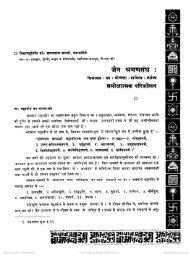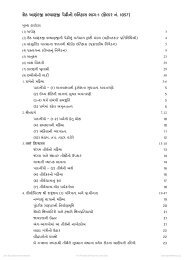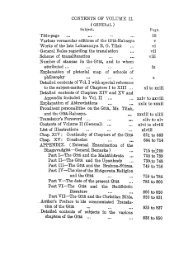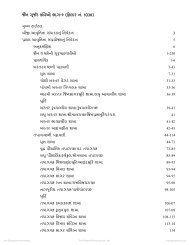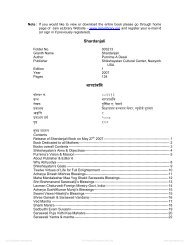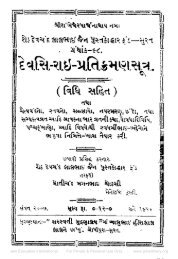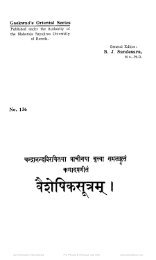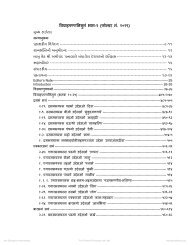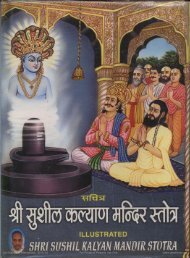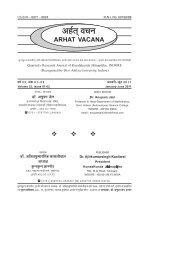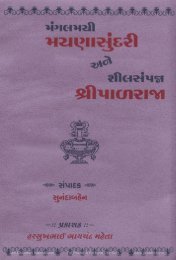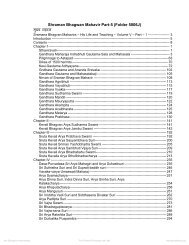Exposition Of Pratikramana Stotras
Exposition Of Pratikramana Stotras
Exposition Of Pratikramana Stotras
You also want an ePaper? Increase the reach of your titles
YUMPU automatically turns print PDFs into web optimized ePapers that Google loves.
18 <strong>Exposition</strong> of <strong>Pratikramana</strong> <strong>Stotras</strong>That which purifies the mind. (Präyas means that which is ingeneral, chitta means purifies the mind).The other involuntary movements, which are major exceptions,are: a. When one has to move from one‟s place and posture due tonatural calamities like fire, lightening, earth quakes and others, b.to save a living creature e.g., mouse from claws of a cat, c. becauseof unexpected attack by robbers or molestation by wild animalslike snake bites and others, or d. forced to move by order of higherauthority.Thus, there are 12 minor exceptions and 4 major interruptions ofKäyotsarga.Käyotsarga: The word „Käyotsarga‟ is the Sanskrit translation ofthe Prakrit word „Käussagga‟. It means the undisturbedabandonment of the body. It is defined as standing in silent inmeditation motionless except the involuntary movements of thebody such as breathing, for a fixed duration until the Namokäramantra is recited by loudly saying “Namo Arihantänam.”Käyotsarga may be performed either with <strong>Pratikramana</strong> or for thesake of mastery over oneself, i.e. victory over calamities.The duration of Käyotsarga is specified in terms of respiratorycycles. One respiratory cycle equals one deep breath in and onedeep breath out. Concentrating on breathing cycles helps achievedeep concentration necessary for meditation. The most commonduration of Käyotsarga is 25 respiratory cycles.Käyotsarga should be done without committing any of thefollowing 19 errors:Standing either on one leg or keeping the leg in a crooked position(ghotakadosha), taking support of a pole or wall while sitting(stambahädosha), touching the ceiling with head (mäladosha),keeping feet apart (nigaddosha), sitting with toes or heels touchingeach other (uddhidosha), keeping hands on the private parts(shabaridosha), holding the whisk in a wrong position(khalinadosha), keeping head bowed down (vadhudosha), coveringthe navel area and area below the knees with a cloth(lambottaradosha) , covering the chest (for man only)



